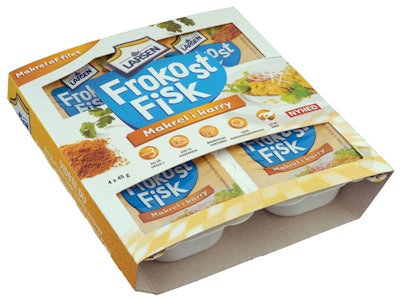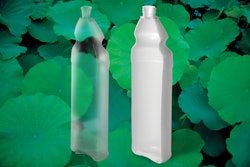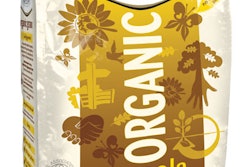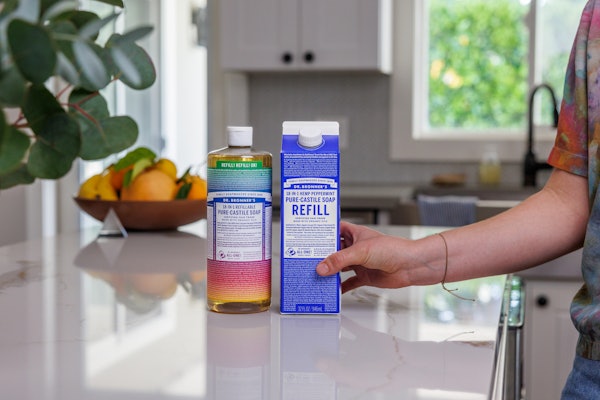
Introduced May 2007 in Denmark and subsequently offered through much of Western Europe, single-serve detachable packs of seafood spread are a pleasingly contemporary alternative to the metal containers long used for this product category.
The product is called Frokost Fisk—loosely translated, “fish for lunchtime.” Available in either a tuna or a mackerel version, it comes from Larsen Danish Seafood of Loegstoer, Denmark. Managing director Jens Madsen says the project dates back as far as 2004.
“Our company packs fish in retortable aluminum cans,” says Madsen. “A few years ago, as we started looking for something more modern, we realized that when it comes to the retort category, there hasn’t been much innovation and Nicolas Apert introduced canned food to Napoleon’s army.”
What about the retortable pouch that now seems so popular for tuna and salmon?
“We’re not so sure the pouch is all that popular,” says Madsen. “This format is more practical. It’s easier to open, and consumers have an easier time removing all the product than they do with a pouch.”
Added convenience comes with the four-pack format, says Madsen. Consumers buy four servings in a single convenient pack and then tear off the 45-g servings whenever they like.
A key development partner in this project was Faerch Plast (www.faerchplast.com). That firm has a registered trademark on the new concept: Ampet®. The “am” comes from “ambient,” and the “pet” refers to the CPET tray material. Faerch Plast has this to say about the Ampet concept in its DuPont Awards entry form.
“Glass jars and metal cans have served their purpose well, but with every new generation, new ideas become tomorrow’s traditions. The Ampet concept opens up a host of possibilities in design and functionality.”
The containers are monolayer CPET thermoformed by Faerch Plast. Sheet thickness prior to thermoforming is 600 microns. Depth of draw is 27 mm. Vacuum and plug assist are used. The cavities are formed in groups of four. The forming tool also creates the perforation used by consumers to tear off a serving when lunchtime rolls around. According to Torben Pedersen at Faerch Plast, considerable precision is required in forming this container.
“The perforation is done during thermoforming while the forming tool is still closed,” says Pederson. “Very accurate cutting tools are used to make sure the trays are perforated enough to make it easy for the consumer to tear a portion off yet not perforated so much that stability is compromised in the filling, sealing, or retorting processes. Also, because we make the perforation in the shape of an ‘S,’ this brings additional stability.”
Lidding material, supplied by Ehrno (www.ehrno.dk), is a three-layer lamination of 23-micron polyester/9-micron foil/25-micron polyester peel film. A key performance characteristic of the entire package concept is that it’s easy to open yet it withstands the rigors of retorting. The “peel-film” layer in the three-layer lamination is what makes this possible. It’s supplied by Mitsubishi (www.m-petfilm.com).
While Madsen is reluctant to describe certain portions of the processing and packaging operations in detail, both are largely automatic. Product loading into containers is done on equipment developed in house by Larsen with help from an engineering firm in Denmark. “We have some patents pending,” says Madsen in explaining why he prefers not to describe the filling equipment in any great detail.
Sealing, he says, is done on a machine supplied by Sealpac (www.sealpac.de) at speeds in the range of 60 four-packs/min. The four-packs are run through an automatic sleeving machine that applies the paperboard secondary packaging. Case-packing is automated, too. Both sleeving and case-packing machines are from SCA (www.sca.com).
Shelf life at ambient temperature, says Madsen, is two years. Consumers pay about $3.15 for a sleeved four-pack that holds a total of 180 g, 45 g per container.
And what is the cost of the Ampet concept to Larsen? Faerch Plast figures the price on raw material is up to 40% cheaper compared to cans and glass. An alteration of the production line is required, and this can be an expensive part of the transition from glass or cans to plastic. But with a documented materials cost savings of 40%, this upfront cost can be quickly recouped, notes Faerch Plast.
DuPont Awards judges lauded the Frokost Fisk concept for resource and energy optimization. While Larsen Danish Seafood has no hard data to quantify such claims, Madsen says that achieving a smaller carbon footprint was among the drivers behind this new packaging format’s introduction. “I think it’s generally agreed that the plastic components in this new package consume less energy, start to finish, than metal packaging,” says Madsen.
From a recycling standpoint, it’s hard to imagine a CPET container and foil-based multilayer lidding material being as recyclable as a steel or aluminum can. But Faerch Plast positions the Ampet concept as a step forward on the sustainability front.
“The trays take up considerably less space than glass or cans, both in storage and in transportation,” notes Faerch Plast. “Logistical and weight benefits lead to energy optimization in the form of reduced fuel spent on transportation. And Ampet is based on PET monomaterial that, when incinerated, releases only CO2, H2O, and a minor quantity of ash as byproducts. Generally the plastic raw material is less energy-demanding than the production of, for example, aluminum.”























